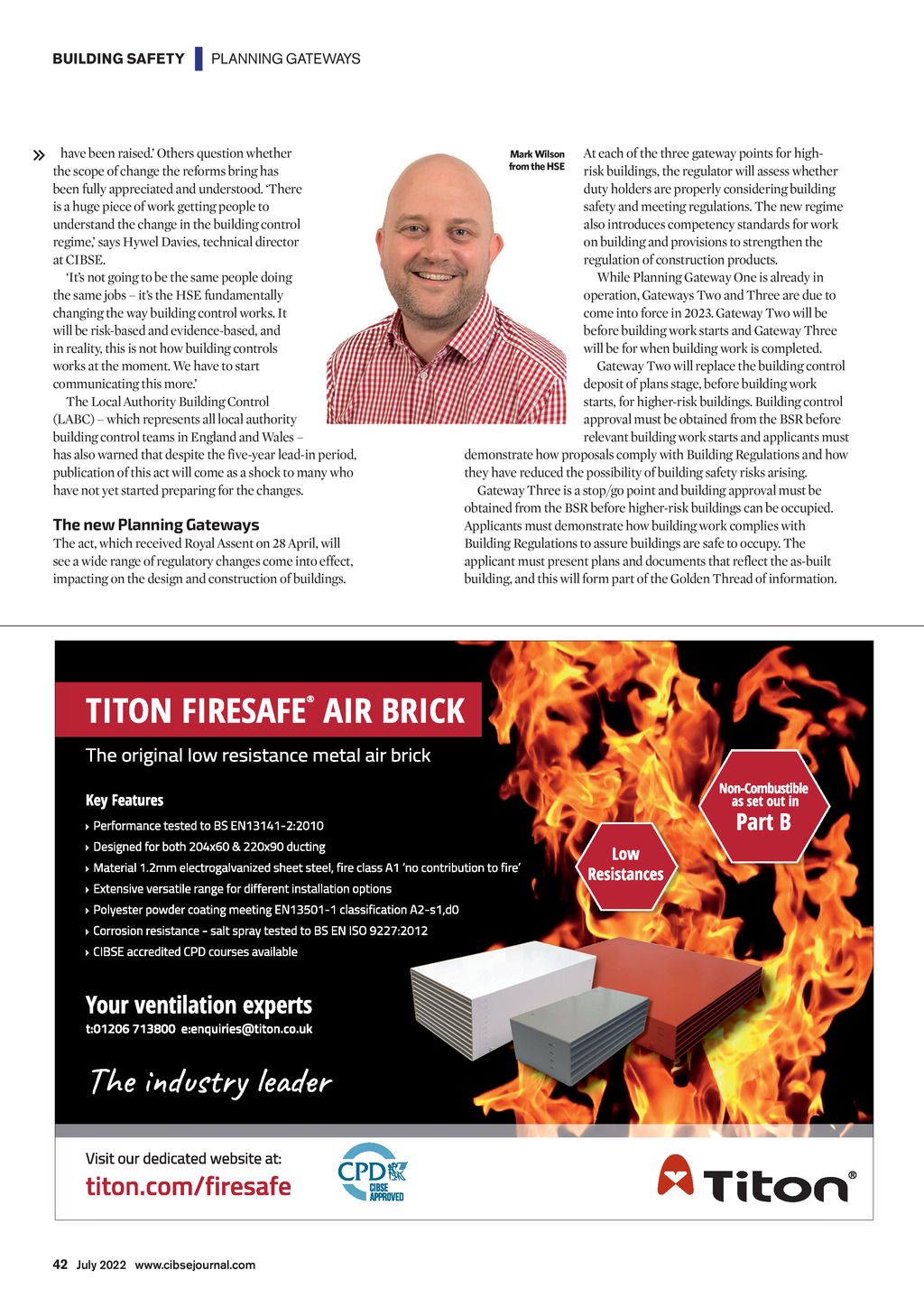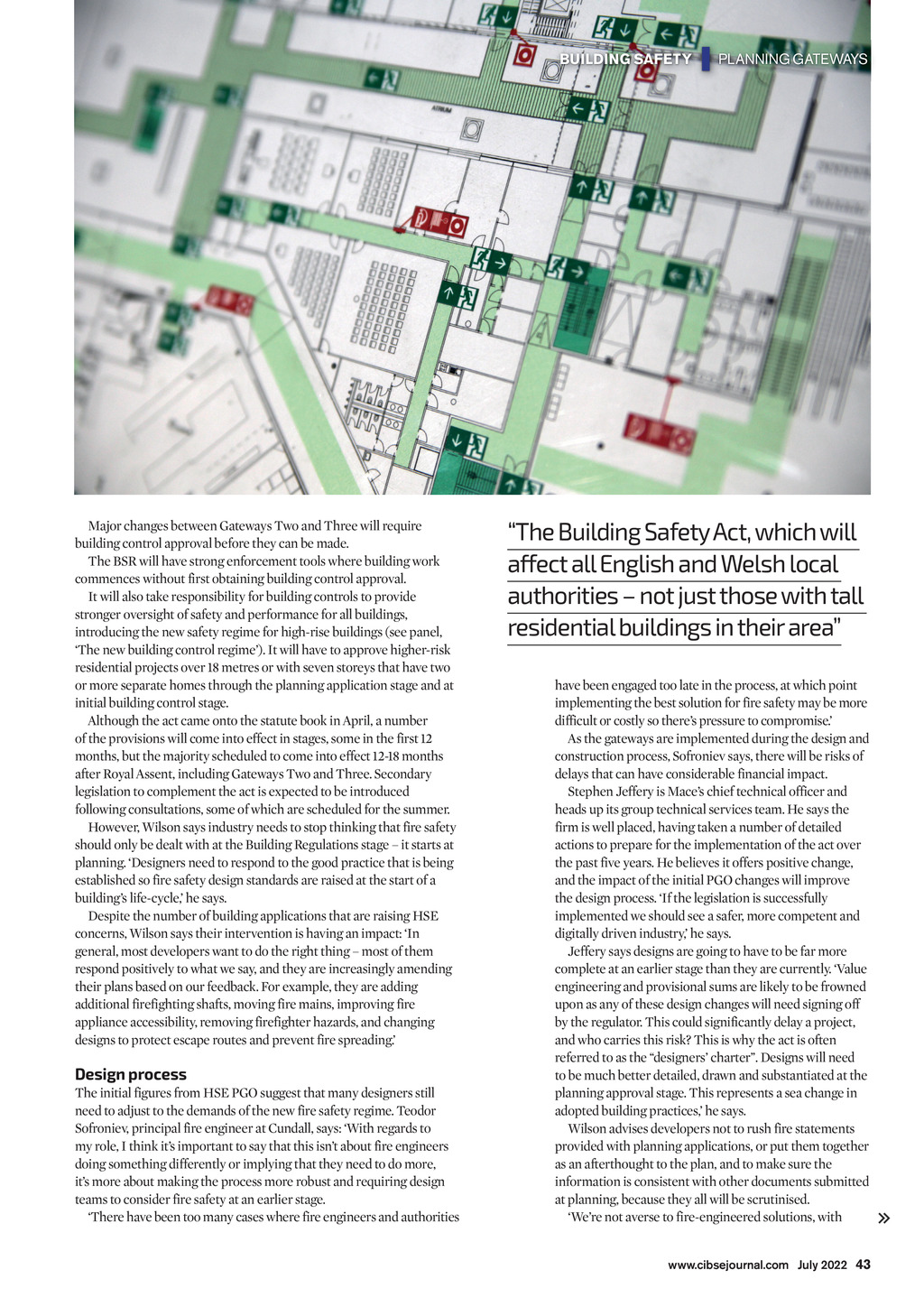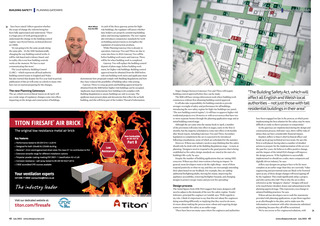


BUILDING SAFETY | PLANNING GATEWAYS hhave been raised. Others question whether the scope of change the reforms bring has been fully appreciated and understood. There is a huge piece of work getting people to understand the change in the building control regime, says Hywel Davies, technical director at CIBSE. Its not going to be the same people doing the same jobs its the HSE fundamentally changing the way building control works. It will be risk-based and evidence-based, and in reality, this is not how building controls works at the moment. We have to start communicating this more. The Local Authority Building Control (LABC) which represents all local authority building control teams in England and Wales has also warned that despite the five-year lead-in period, publication of this act will come as a shock to many who have not yet started preparing for the changes. The new Planning Gateways The act, which received Royal Assent on 28 April, will see a wide range of regulatory changes come into effect, impacting on the design and construction of buildings. At each of the three gateway points for highrisk buildings, the regulator will assess whether duty holders are properly considering building safety and meeting regulations. The new regime also introduces competency standards for work on building and provisions to strengthen the regulation of construction products. While Planning Gateway One is already in operation, Gateways Two and Three are due to come into force in 2023. Gateway Two will be before building work starts and Gateway Three will be for when building work is completed. Gateway Two will replace the building control deposit of plans stage, before building work starts, for higher-risk buildings. Building control approval must be obtained from the BSR before relevant building work starts and applicants must demonstrate how proposals comply with Building Regulations and how they have reduced the possibility of building safety risks arising. Gateway Three is a stop/go point and building approval must be obtained from the BSR before higher-risk buildings can be occupied. Applicants must demonstrate how building work complies with Building Regulations to assure buildings are safe to occupy. The applicant must present plans and documents that reflect the as-built building, and this will form part of the Golden Thread of information. Mark Wilson from the HSE TITON FIRESAFE AIR BRICK The original low resistance metal air brick Non-Combustible as set out in Key Features Performance tested to BS EN13141-2:2010 Designed for both 204x60 & 220x90 ducting Material 1.2mm electrogalvanized sheet steel, fire class A1 no contribution to fire Extensive versatile range for different installation options Polyester powder coating meeting EN13501-1 classification A2-s1,d0 Corrosion resistance - salt spray tested to BS EN ISO 9227:2012 CIBSE accredited CPD courses available Part B Low Resistances Your ventilation experts t:01206 713800 e:enquiries@titon.co.uk The industry leader Visit our dedicated website at: titon.com/firesafe CIBSE Journal (Titon) July 2022.indd 1 42 July 2022 www.cibsejournal.com CIBSE July 22 pp41-44 Building Safety.indd 42 16/06/2022 16:38:20 24/06/2022 15:25